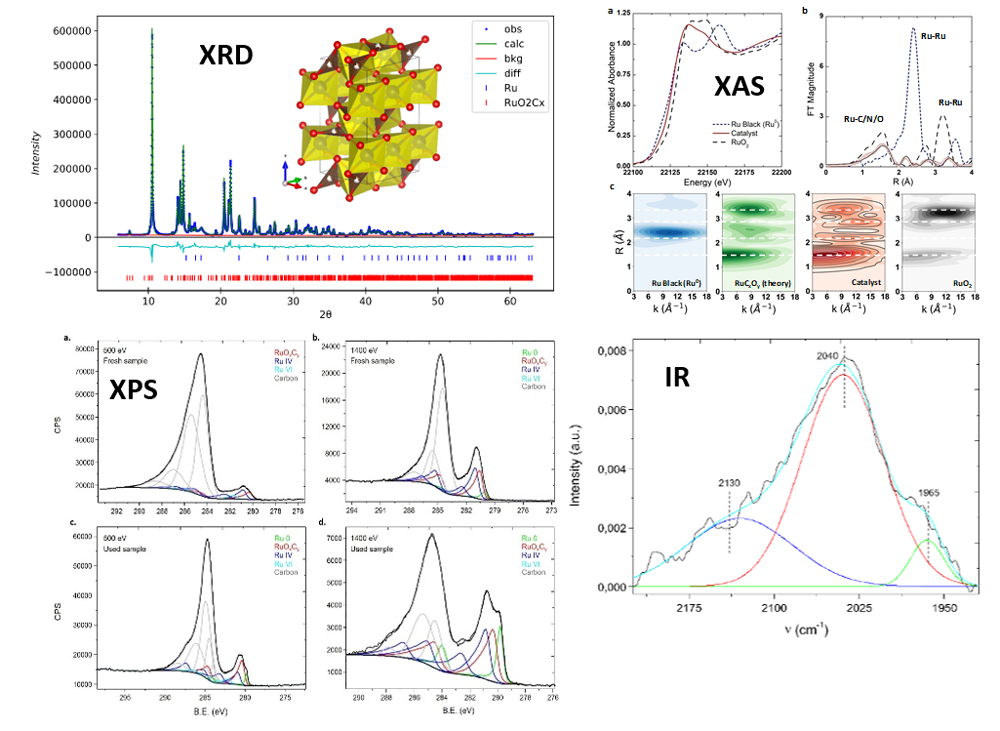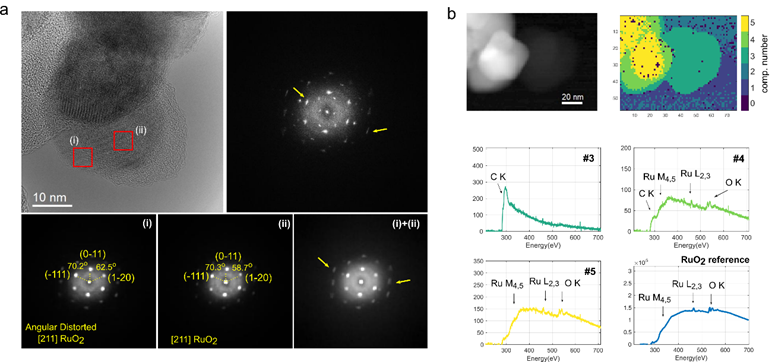Do you want to keep up to date? Subscribe to our newsletter. 1 mail every 2 months! |
 |

Cerdanyola del Vallès, 18th May 2023. Linear economy has proven to be unsustainable in the long run due to its ineffective use of natural resources that leads to a huge amount of greenhouse gas emissions and waste generation. An alternative model, the so-called circular economy is based on an efficient production cycle that focuses on minimising waste and better recycling and seems to be key to find solutions for the climate crisis. One process that can be essential in this challenge is carbon dioxide (CO2) sequestration and usage, that is, transform atmospheric or produced carbon dioxide into energy carriers or platform molecules of the chemical industry.
An international collaboration between the Instituto de Tecnología Química – a join research center between Consejo Superior de Investigaciones Científicas and Universitat Politècnica de València (ITQ-CSIC-UPV), SOLEIL Synchrotron, Universidad de Cádiz, and ALBA Synchrotron permitted to synthesize a new catalyst able to hydrogenate carbon dioxide to methane with significant improvements in comparison to existing analogues. Its main advantage is that it possesses a much higher activity and so the reaction temperature can be lowered from usual 270-400ºC to only 180ºC, with an excellent long-term stability. Furthermore, this catalyst is able to operate under intermittent power supply conditions, which couples very well with electricity production systems based on renewable energies. Moreover, its synthetic procedure itself is ecofriendly, making it an even greater option in environmental issues.
This new catalyst can be used for methane (natural syngas) production, that is considered as a promising energy carrier for hydrogen storage.
The new solid catalyst was designed and synthesized in the ITQ (CSIC-UPV) by a mild, green hydrothermal synthesis procedure resulting in a material that contains interstitial carbon atoms doped in the ruthenium (Ru) oxide crystal lattice, enabling the stabilization of Ru cations in a low oxidation state with the formation of a none yet reported ruthenium oxy-carbonate phase.
A full picture of its structure and of the origins of its catalytic activity has been achieved by combining different synchrotron techniques at different ALBA beamlines combined with advanced nanoscale image studies done at the Universidad de Cadiz. The use of these combined characterization tools has enabled the access to fundamental information of the catalyst, such as its electronic and geometric structure. Particularly, the researchers used synchrotron APXPS (Ambient Pressure X-Ray Photoelectron Spectroscopy) at CIRCE-NAPP, XAS (X-Ray Absorption Spectroscopy) at CLAESS and XRD (X-Ray Diffraction) at MSPD beamline. Far-Infrared (IR) spectroscopy characterization was also performed at SOLEIL Synchrotron, in France.

Summary of synchrotron techniques employed synergistically at the ALBA Synchrotron to understand the structure and properties of the catalyst under investigation.

HREM and STEM-EELS analysis done at the Universidad de Cádiz.
With the collaboration of Fundación Española para la Ciencia y la Tecnología. The ALBA Synchrotron is part of the of the Unidades de Cultura Científica y de la Innovación (UCC+i) of the FECYT and has received support through the FCT-21-17088 project.





